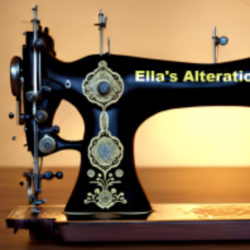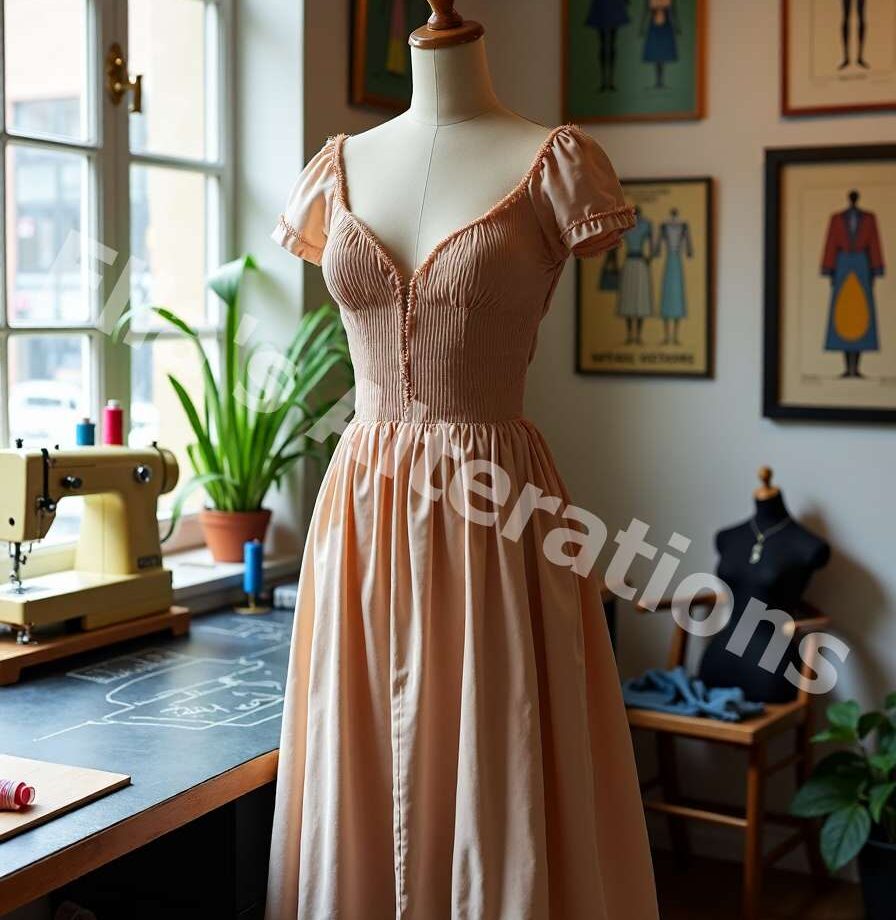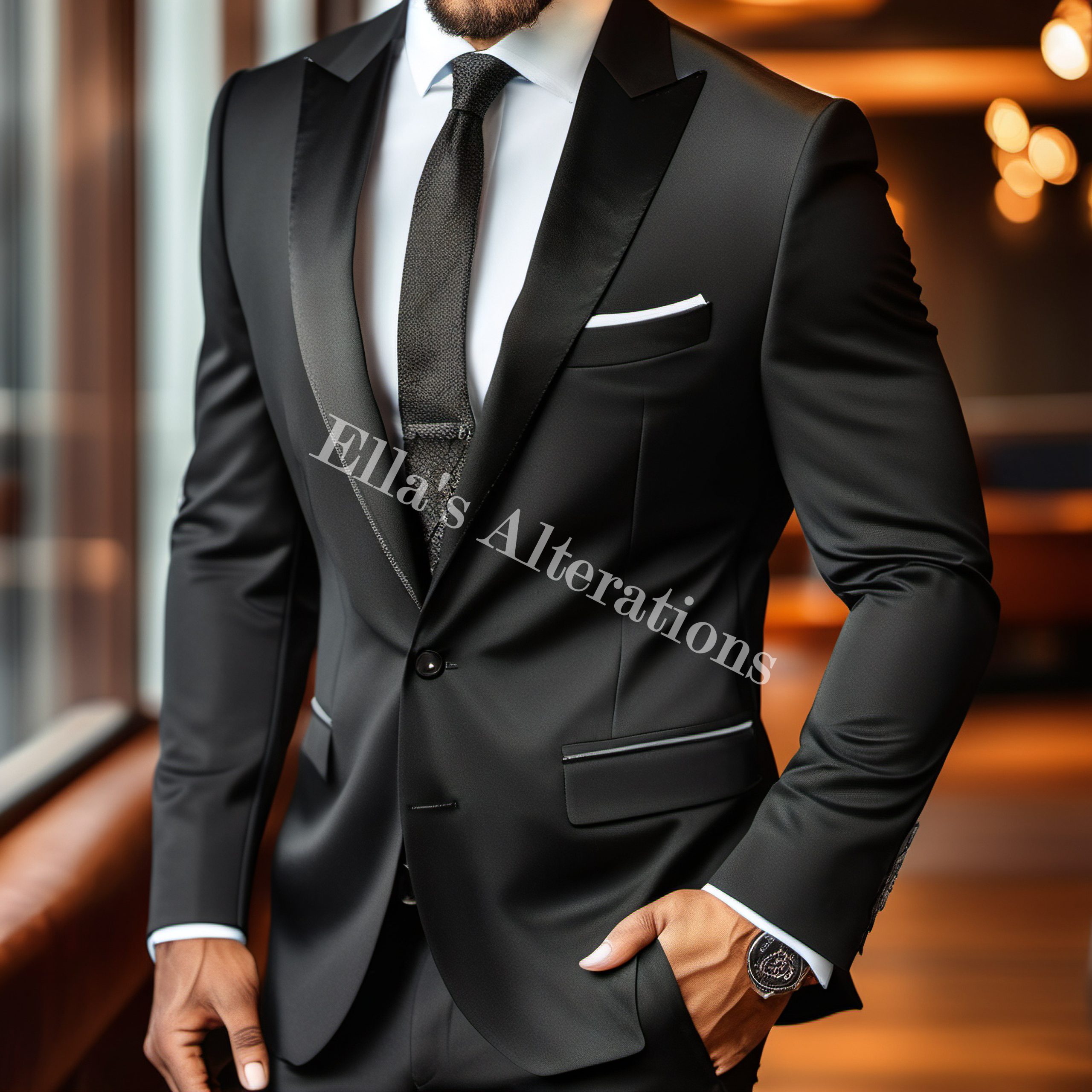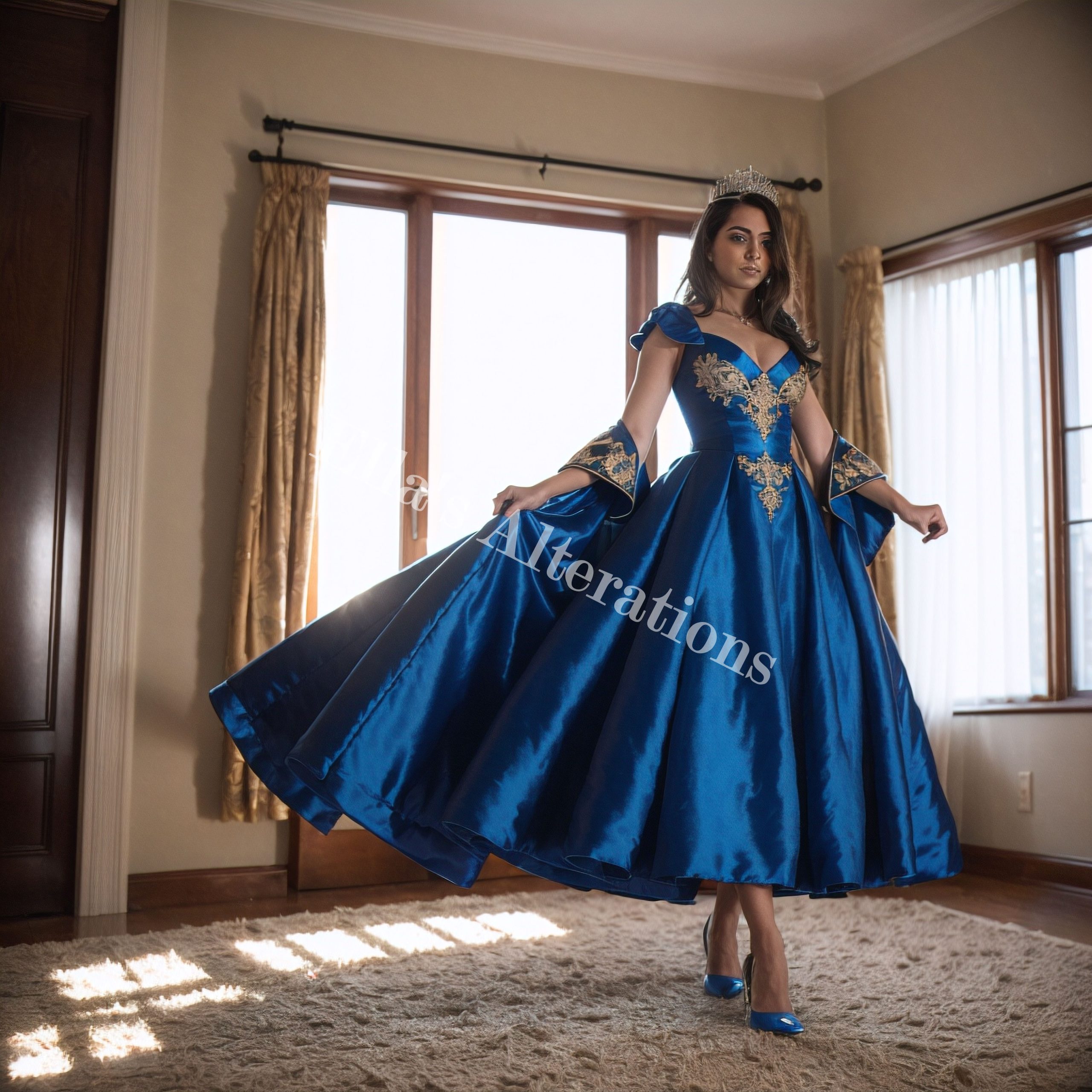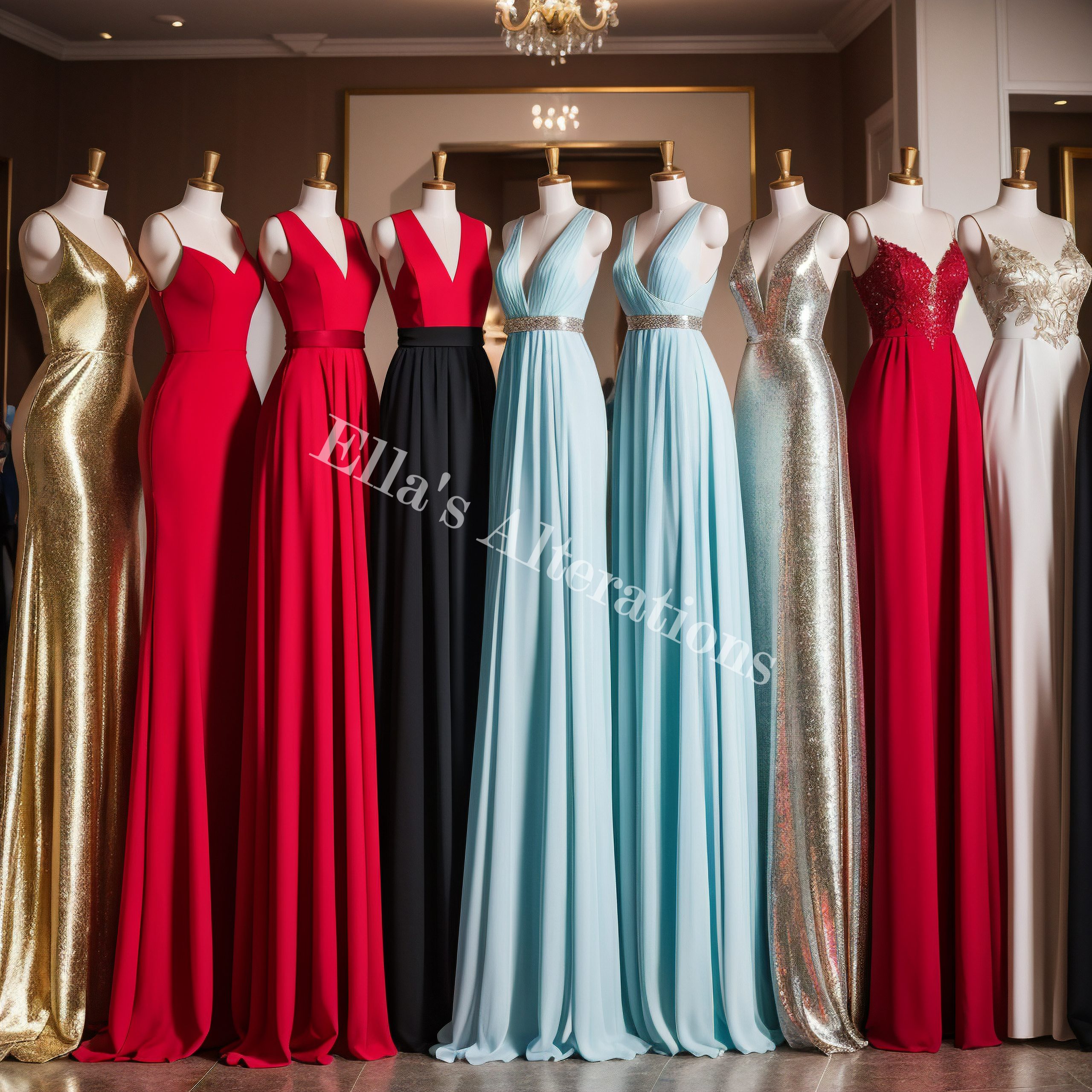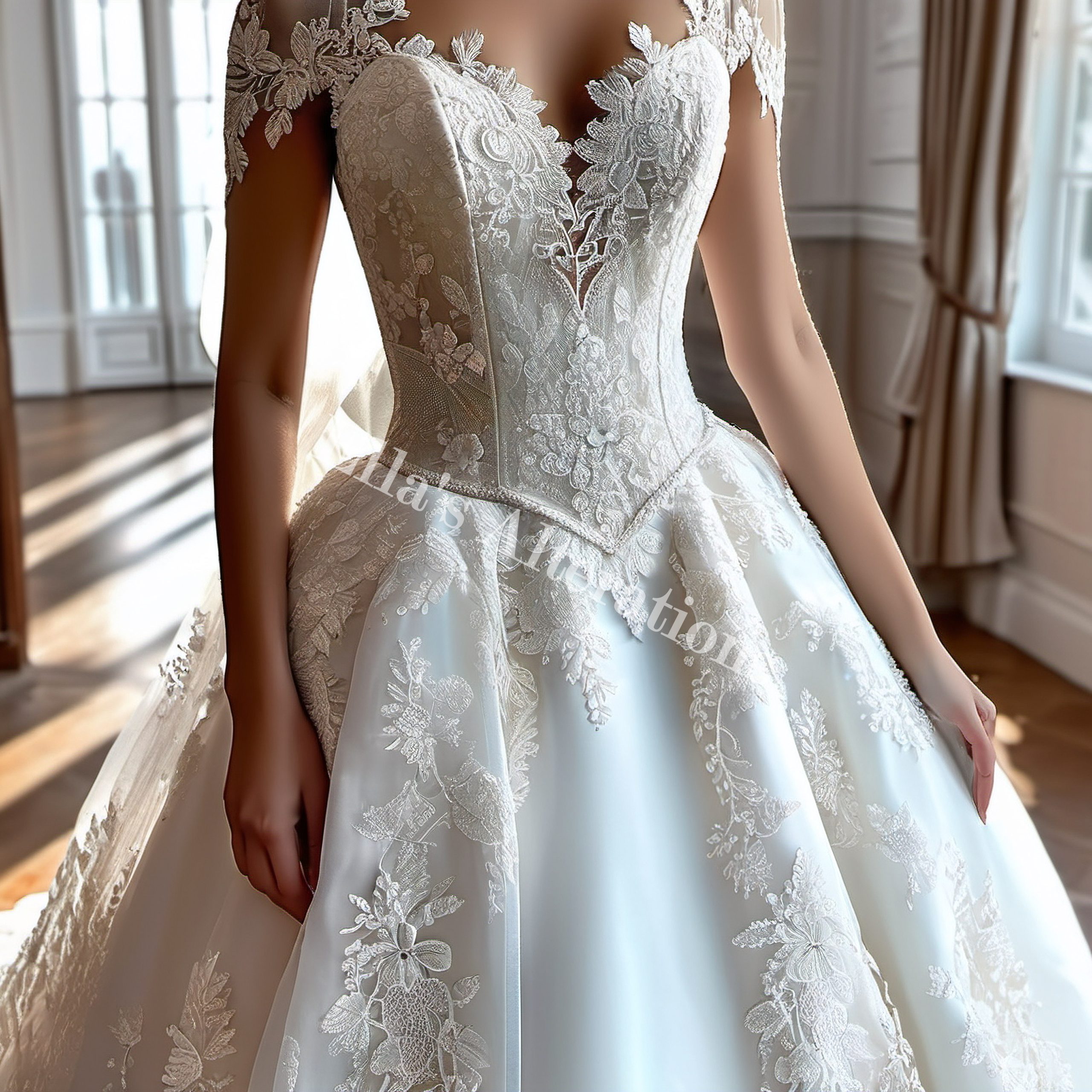Introduction:
In a world where fast fashion dominates, giving clothes a second life is a bold and sustainable choice.
Whether it’s a vintage thrift store find or a beloved but outdated piece in your wardrobe, tailoring can transform your garments into modern, stylish, and one-of-a-kind pieces.
With a little creativity, sewing skills, or help from a tailor, you can upcycle, repurpose, and revamp old clothes into fresh fashion statements.
Clothing waste has become one of the biggest environmental issues in the fashion industry.
Millions of garments are discarded every year, often ending up in landfills and contributing to pollution.
Instead of adding to the waste, embracing tailoring and upcycling allows individuals to minimize their environmental impact while maintaining a stylish wardrobe.
By learning how to tailor and refashion garments, anyone can breathe new life into old pieces, turning them into contemporary and fashionable outfits.
One of the key advantages of tailoring is the ability to achieve a perfect fit.
Off-the-rack clothing often doesn’t suit every body type, and fashion trends can change rapidly, making certain silhouettes or styles outdated.
However, rather than discarding ill-fitting or outdated garments, a few adjustments can make them flattering and trendy again.
Whether it’s taking in a dress to enhance its shape, hemming pants for a tailored look, or modifying a neckline to create a more modern aesthetic, tailoring offers endless possibilities for customization.
Beyond fit, upcycling garments allows for personalization and self-expression.
Customizing clothes with fabric paint, embroidery, lace, or decorative stitching can create a unique and distinctive style.
This approach not only sets a wardrobe apart from mass-produced clothing but also fosters creativity.
Individuals can experiment with their designs, add new details, and transform a simple thrift store find into a standout fashion statement.
For those who are new to sewing or tailoring, starting with small projects is a great way to build confidence.
Basic alterations like hemming a skirt, replacing buttons, or resizing a t-shirt are manageable tasks that require minimal sewing experience.
As skills develop, more complex projects like refashioning a dress into a two-piece outfit, converting jeans into stylish shorts, or combining different fabrics for a patchwork-style creation become feasible.
Online resources, tutorials, and sewing communities can provide valuable guidance and inspiration for those looking to refine their techniques.
Another significant aspect of repurposing clothing is the sentimental value it preserves.
Many people have garments with emotional attachments—whether it’s a loved one’s old sweater, a wedding dress, or a favorite childhood jacket.
Instead of storing these items away or discarding them, they can be altered or restyled to remain wearable and relevant.
Tailoring provides an opportunity to retain the memories associated with certain pieces while making them functional and stylish for everyday use.
Additionally, upcycling and tailoring can be cost-effective.
Investing in minor alterations or DIY projects can be far more budget-friendly than purchasing new clothing.
Thrift stores offer an abundance of affordable, high-quality materials that can be transformed into fashionable pieces with a little creativity and sewing know-how.
Instead of spending a fortune on new trends, repurposing old clothes allows for a sustainable and economical approach to fashion.
For those who prefer professional help, finding a skilled tailor can make all the difference.
Tailoring services range from minor fixes to major garment reconstructions.
Whether it’s adjusting the fit of a vintage coat, revamping a dress, or modernizing a classic suit, a tailor can bring a vision to life while ensuring high-quality craftsmanship.
Seeking out local tailoring services also supports small businesses and promotes ethical fashion choices.
Ultimately, tailoring and upcycling present an opportunity to transform outdated or unused garments into stylish, functional, and eco-friendly fashion pieces.
Embracing sustainable practices in clothing alterations not only reduces waste but also encourages mindful consumption, creativity, and individuality in fashion.
Whether through DIY projects, professional tailoring, or a combination of both, giving clothes a second life is an impactful and rewarding endeavor that benefits both personal style and the environment.
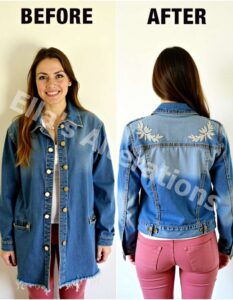
The Benefits of Tailoring and Upcycling Clothes:
Tailoring and upcycling clothes offer a wealth of benefits that go beyond simple fashion choices.
These practices allow you to maximize your wardrobe’s potential while embracing sustainability, creativity, and cost-effectiveness.
Whether you’re updating an old favorite, personalizing a secondhand find, or revamping a sentimental piece, tailoring and upcycling give clothes a second life in a way that is both practical and stylish.
Here’s a deeper look at the many advantages of these transformative fashion techniques.
Sustainability and Eco-Friendliness
The fashion industry is one of the biggest contributors to environmental waste, with millions of garments ending up in landfills each year.
Fast fashion trends encourage excessive consumption, leading to a cycle of constant buying and discarding.
Tailoring and upcycling counteract this wasteful culture by extending the life of clothing, reducing textile waste, and minimizing the demand for new production.
When you alter or repurpose an existing garment instead of buying new, you lower your carbon footprint.
Clothing production requires significant water, energy, and resources, with synthetic fabrics like polyester contributing to microplastic pollution.
By choosing to upcycle or tailor what you already own, you actively support slow fashion—a movement focused on thoughtful consumption, ethical production, and sustainability.
Cost-Effective Wardrobe Refresh
Shopping for new clothes can be expensive, especially if you’re aiming for high-quality or trendy pieces.
Instead of frequently purchasing new outfits, tailoring and upcycling allow you to refresh your wardrobe affordably.
A few alterations—such as taking in a dress, hemming pants, or replacing old buttons—can make your clothing look and feel brand new.
Upcycling also helps save money by turning outdated or worn-out clothes into stylish and functional pieces.
A pair of jeans with a hole can be transformed into trendy shorts, while an oversized blazer can be refitted into a chic, structured jacket.
Even small DIY fashion projects, like adding embroidery or dyeing faded fabrics, can completely revamp an item without requiring a shopping trip.
Personalized and Unique Style
One of the most significant advantages of tailoring and upcycling is the ability to create a wardrobe that reflects your unique style.
Unlike mass-produced clothing, which often follows generic trends, repurposed garments allow for individuality and self-expression.
Whether it’s adjusting a dress to better suit your body shape, adding embellishments for a personal touch, or completely transforming an item into something new, you gain creative control over your clothing.
Tailoring also ensures that your clothes fit perfectly, enhancing both style and comfort.
Off-the-rack garments are designed for standard sizing, which doesn’t always complement every body type.
A tailored fit enhances your silhouette, making even the simplest pieces look polished and well put together.
Preserving Sentimental Pieces
Many people have clothes with sentimental value—perhaps a vintage dress passed down from a loved one, a favorite pair of jeans worn over the years, or even a wedding dress that holds cherished memories.
Instead of storing these items away or discarding them when they become outdated, tailoring and upcycling offer a way to preserve their essence while making them wearable again.
A beloved oversized sweater can be refashioned into a cozy cardigan, an old concert T-shirt can be turned into a trendy crop top, and a lace wedding gown can be shortened into an elegant cocktail dress.
These transformations help maintain emotional connections to clothing while ensuring they continue to serve a practical purpose.
Better Fit and Comfort
Ill-fitting clothes can make even the most stylish outfit look unflattering.
Whether it’s a dress that’s too long, pants that don’t sit right, or a shirt that feels too loose, simple alterations can dramatically improve the fit and overall appearance of your clothes.
Tailoring allows garments to complement your body shape, providing better comfort and confidence.
By making small adjustments like hemming sleeves, taking in waistlines, or reshaping necklines, you can customize your wardrobe to fit perfectly.
This ensures you’re not only wearing pieces that look great but also feel comfortable and flattering.
Encouraging Creativity and Skill Development
Upcycling and tailoring clothes also present an opportunity to develop new skills.
Learning to sew, mend, or repurpose clothing fosters creativity and resourcefulness.
Even basic skills like stitching buttons, hemming, or patching holes can go a long way in maintaining a functional and stylish wardrobe.
For those interested in DIY fashion, upcycling projects provide a creative outlet where old clothes become a blank canvas for innovation.
From experimenting with dye techniques to reconstructing garments, the possibilities are endless.
Additionally, these skills can lead to cost savings and even potential business opportunities for those interested in fashion design.
Supporting Ethical and Sustainable Fashion Brands
By embracing tailoring and upcycling, you also contribute to a more ethical fashion industry.
Many independent designers and sustainable brands specialize in repurposed clothing and eco-friendly fashion alternatives.
Supporting these businesses helps promote sustainable fashion practices while encouraging companies to move away from fast fashion production models.
Additionally, choosing secondhand clothing and tailoring it to fit your needs keeps garments in circulation for longer.
Many thrift stores, vintage boutiques, and online platforms offer stylish pre-loved clothing that can be customized to match your aesthetic.
This shift towards conscious consumerism supports fair labor practices and reduces the demand for exploitative manufacturing processes.
Final Thoughts On Introduction
Tailoring and upcycling clothes provide a meaningful way to embrace sustainable fashion while maintaining a stylish and budget-friendly wardrobe.
Whether through minor alterations, creative repurposing, or learning new sewing skills, these practices empower you to transform old garments into something fresh, modern, and uniquely yours.
By choosing to give clothes a second life, you contribute to a more sustainable, ethical, and innovative fashion industry—one stitch at a time.
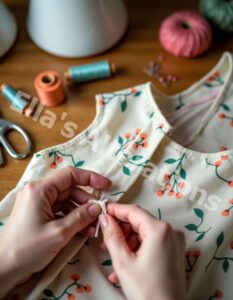
What if a Tailor does not want to alter your clothes?
How to Transform Your Clothes:
Transforming your clothes is a creative and rewarding process that allows you to give old, outdated, or ill-fitting garments a fresh new look.
Whether you’re making simple alterations, repurposing fabric, or completely reconstructing a piece, there are countless ways to breathe new life into your wardrobe.
By learning a few essential techniques and experimenting with different styles, you can turn forgotten clothes into modern, stylish, and functional pieces that reflect your unique fashion sense.
Simple Alterations for a Modern LookBasic tailoring can significantly improve the fit and appearance of your clothes.
Even minor adjustments can transform an outfit from outdated to on-trend.
Here are some easy alterations that can instantly upgrade your wardrobe:
Tapering and Hemming – Shortening pants, skirts, or dress hemlines can modernize the silhouette and make an outfit feel more contemporary.
Wide-leg trousers can be tapered into slim-fit pants, while long skirts can be shortened to create trendy midi or mini styles.
Taking In or Letting Out – Adjusting the size of garments ensures a perfect fit.
If a dress or blazer is too loose, taking in the seams creates a more flattering shape.
Letting out seams can make garments more comfortable, especially if they’ve shrunk over time.
Neckline Changes – Transforming a high neckline into a V-neck or an off-the-shoulder style can give an old top or dress a trendy refresh.
This simple alteration can make a garment feel more flattering and stylish.
Sleeve Adjustments – Removing sleeves from a dress or shirt can turn it into a sleeveless summer outfit.
Adding lace or sheer fabric to sleeves can also provide a fresh, elegant look.
Creative Upcycling Ideas
Upcycling involves taking old garments and repurposing them into something entirely new.
This approach not only prevents waste but also allows for endless creative expression.
Here are a few exciting upcycling ideas:
Turn Old Jeans into Shorts or Skirts – A pair of worn-out jeans can easily be cut and sewn into stylish denim shorts or an A-line skirt.
Add distressing, embroidery, or patches to give them a customized look.
Repurpose Oversized Shirts – Large button-up shirts can be transformed into trendy dresses, wrap tops, or belted tunics.
Cropping a long shirt and adding elastic at the waist creates a stylish and comfortable piece.
Sweater Makeovers – Old sweaters can be refashioned into cozy cardigans by adding buttons or a zipper.
Sleeves from thick sweaters can be turned into warm leg warmers or mittens.
Patchwork and Color Blocking – Combining fabric from different garments can create a unique, artistic piece.
Sewing together different materials, prints, or denim scraps results in one-of-a-kind statement clothing.
Mending and Repair for Longevity
Instead of discarding clothes with minor damage, repairing them extends their lifespan and keeps your wardrobe sustainable.
Some effective mending techniques include:
Invisible Mending – Carefully stitching small tears or holes using color-matching thread makes repairs almost unnoticeable, restoring the garment to its original condition.
Visible Mending – Instead of hiding repairs, embrace them as a fashion statement.
Decorative embroidery, contrast stitching, and colorful patches add character to clothing while fixing damaged areas.
Replacing Buttons and Zippers – Swapping out plain buttons for decorative ones can instantly upgrade a shirt or coat.
Replacing broken zippers extends the wearability of jackets, pants, and dresses.
Reinforcing Weak Seams – Strengthening seams with extra stitching prevents garments from falling apart and ensures long-term durability.
DIY Fashion Hacks for Beginners
If you’re new to tailoring and upcycling, start with simple DIY hacks to get comfortable with transforming clothes.
Here are a few beginner-friendly ideas:
Use Fabric Paints and Dyes – Refresh faded clothes by dyeing them a bold new color or using fabric paint to add fun designs.
Tie-dyeing is an easy and trendy way to revamp T-shirts and dresses.
Sew-on Accessories – Add lace trims, beads, or decorative patches to personalize plain clothing.
Sewing on pearls or sequins can give an old dress an elegant upgrade.
Convert Dresses into Two-Piece Sets – Cutting and hemming a long dress into a top and matching skirt creates a stylish and versatile co-ord set.
No-Sew Techniques – If you’re not confident with sewing, use fabric glue, iron-on patches, or knotting techniques to transform garments without stitching.
Repurposing Accessories and Fabric Scraps
Even small fabric scraps and unwanted accessories can be reused creatively:
Make Scrunchies or Headbands – Leftover fabric can be sewn into stylish hair accessories, reducing waste while adding fun elements to your look.
Create Tote Bags or Pouches – Old T-shirts or denim can be transformed into reusable shopping bags, pouches, or even laptop sleeves.
Revamp Old Shoes or Bags – Adding studs, paint, or embroidery to shoes and handbags can give them a fresh, unique aesthetic.
Finding Inspiration for Clothing Transformations
Not sure where to start?
Look for inspiration from fashion blogs, upcycling communities, and sustainable fashion influencers.
Platforms like Pinterest, Instagram, and YouTube offer countless tutorials on transforming clothing through sewing, dyeing, and creative styling.
Fashion runways, vintage collections, and street style trends can also spark ideas for repurposing garments into trendy pieces.
Embracing a Sustainable, Stylish Future
Transforming your clothes isn’t just about fashion—it’s about making intentional choices that support sustainability and creativity.
Whether through minor alterations, creative repurposing, or learning to mend, these techniques allow you to curate a wardrobe that is unique, eco-friendly, and deeply personal.
By giving garments a second life, you contribute to reducing waste, slowing down the cycle of fast fashion, and developing a sense of ownership and pride in your style.
Instead of discarding old clothes, think of them as blank canvases waiting for a creative makeover.
With a little imagination and effort, you can turn forgotten garments into fresh, fashion-forward pieces that align with your personal taste and values.

Where to Find Tailoring Services and Resources:
Finding the right tailoring services and resources is essential for transforming your clothes into stylish, well-fitted, and unique pieces.
Whether you’re looking for professional alterations, DIY sewing guides, or upcycling workshops, there are many ways to access tailoring expertise.
From local tailors to online tutorials, here’s how to find the best resources to bring your clothing transformation ideas to life.
Local Tailoring Services:
Finding a Tailor Near You
If you prefer to have your clothes professionally altered or upcycled, seeking a skilled tailor is a great option.
Professional tailors can make precise alterations, restore vintage garments, and even reconstruct clothing based on your needs.
Here’s how to find a reliable tailor near you:
Search Online Directories – Websites like Google Maps, Yelp, and Angi allow you to browse local tailoring services, read reviews, and compare prices.
Searching terms like “tailor near me” or “clothing alterations near me” can provide a list of options in your area.
Visit Dry Cleaners and Alteration Shops – Many dry cleaners offer tailoring services or have partnerships with local tailors.
Stop by your neighborhood dry cleaner to inquire about available alteration services.
Check with Department Stores and Boutiques – Some fashion retailers offer in-house tailoring services, particularly for formalwear or high-end garments.
Ask at the customer service desk if they have tailoring options.
Ask for Recommendations – Word of mouth is a great way to find a reliable tailor.
Ask friends, family, or colleagues if they have a tailor they trust for alterations or upcycling projects.
Look for Specialty Tailors – If you need specific services, such as vintage clothing restoration, bridal alterations, or denim repairs, search for tailors who specialize in those areas.
Online Tailoring Services:
Virtual and Mail-In Options
For those who don’t have access to a local tailor or prefer the convenience of online services, several platforms offer virtual tailoring consultations and mail-in alterations.
Here’s how they work:
Mail-In Tailoring Services – Companies like Hemster, Stitch It, and The Tailory allow you to send in your garments for professional alterations.
You receive your tailored clothing back within a few weeks.
Custom Clothing Tailoring Platforms – Websites such as Proper Cloth and Indochino offer custom-fitted clothing based on your measurements.
They provide alterations for suits, shirts, and dresses tailored to your specifications.
Online Customization Services – Some online platforms allow you to design and customize clothing, offering upcycled and refashioned garments based on your personal preferences.
DIY Tailoring and Upcycling Resources
If you want to take a hands-on approach to tailoring and upcycling, there are plenty of online and in-person resources to help you learn sewing skills and transformation techniques.
Sewing and Alteration Tutorials
Learning to tailor your clothes at home is a great way to save money and add personal touches to your wardrobe.
Here are some of the best online resources for DIY tailoring:
YouTube Channels – Many sewing experts and fashion upcyclers share step-by-step tutorials for altering and repurposing clothing.
Channels like With Wendy, Coolirpa, and Bernadette Banner offer beginner-friendly lessons.
Sewing Blogs and Websites – Sites like Tilly and the Buttons, The Spruce Crafts, and Seamwork provide guides on hemming, taking in seams, and adjusting garment shapes.
Online Sewing Courses – Platforms like Skillshare, Udemy, and Craftsy offer in-depth classes on clothing alterations, pattern-making, and fashion design.
Upcycling Workshops and Communities
For those who want to learn in a more interactive setting, workshops and online communities provide hands-on experience in clothing transformation:
Local Sewing and Upcycling Workshops – Many community centers, art studios, and sustainable fashion organizations offer workshops on clothing repair, repurposing, and redesigning garments.
Sustainable Fashion Groups – Joining a sustainable fashion group or upcycling community allows you to share ideas, gain inspiration, and learn from experienced DIY fashion enthusiasts.
Online Upcycling Challenges – Some fashion communities host upcycling challenges where participants transform thrifted clothes and share their results for inspiration.
Thrift Stores and Fabric Shops for Upcycling Materials
Finding materials for tailoring and upcycling projects is just as important as learning the techniques.
If you need extra fabric, trims, or replacement buttons, consider these sources:
Thrift Stores and Secondhand Shops – Stores like Goodwill, The Salvation Army, and local vintage boutiques often carry affordable clothing that can be altered or repurposed.
Fabric Stores – Shops like Joann Fabrics, Mood Fabrics, and independent fabric retailers offer a variety of materials for DIY fashion projects.
Scrap Fabric and Textile Recycling Centers – Many cities have textile recycling centers where you can find fabric remnants, secondhand clothing, and sewing supplies at low prices.
Sustainable Tailoring Brands and Ethical Fashion Companies
If you’re looking for sustainable clothing options but don’t want to do the tailoring yourself, several brands focus on upcycled fashion and ethical alterations:
Zero-Waste Fashion Brands – Companies like Patagonia, Eileen Fisher Renew, and The R Collective specialize in sustainable clothing made from repurposed fabrics.
Tailor-Made Sustainable Fashion – Some brands offer made-to-measure sustainable fashion, allowing you to customize clothing to your fit and style.
Repair and Rewear Programs – Brands like Nudie Jeans and Levi’s offer repair services for worn-out denim, extending the life of their products.
Final Thoughts On Finding Tailors
Whether you choose to work with a local tailor, explore online alteration services, or dive into DIY upcycling, there are countless resources available for transforming your clothes.
By investing in tailoring and repurposing, you not only create a wardrobe that is unique and well-fitted but also contribute to a more sustainable and ethical fashion industry.
With the right tools, knowledge, and creativity, you can give your clothes a second life and embrace a fashion-forward, eco-friendly approach to style.
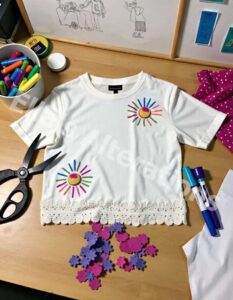
Expertise Mastery: A Master Tailor’s Commitment to Excellence
Conclusion:
Giving clothes a second life through tailoring and upcycling is more than just a fashion trend—it’s a powerful movement toward sustainability, creativity, and conscious consumerism.
By transforming old garments into fresh, stylish pieces, you not only reduce waste but also create a wardrobe that reflects your personality and values.
Whether you’re making small alterations, completely repurposing an outfit, or learning sewing skills, tailoring allows you to take control of your fashion choices in a way that is both rewarding and environmentally responsible.
The Lasting Impact of Tailoring and Upcycling
The fashion industry is one of the largest contributors to global waste, with millions of tons of clothing ending up in landfills every year.
Fast fashion has accelerated the cycle of consumption, leading to excessive production, unethical labor practices, and severe environmental consequences.
By choosing to tailor, mend, and upcycle your clothes, you are actively resisting this wasteful system and embracing a more mindful way of dressing.
Tailoring not only extends the lifespan of garments but also encourages a shift away from disposable fashion.
Instead of constantly buying new clothes to keep up with trends, you can refresh and modernize what you already own.
Whether it’s updating the fit of a thrifted blazer, repurposing an oversized dress, or adding unique embellishments to a plain shirt, every small change contributes to a more sustainable fashion future.
A Personal and Unique Approach to Fashion
One of the greatest benefits of tailoring and upcycling is the ability to create a truly personalized wardrobe.
Unlike mass-produced clothing, which is designed for standard sizes and trends, tailored and upcycled pieces are unique to you.
You can adjust garments to fit your exact measurements, choose colors and styles that suit your personality, and experiment with fashion in a way that store-bought clothing simply doesn’t allow.
Upcycling, in particular, encourages creative expression.
Old jeans can be transformed into trendy shorts, vintage dresses can be modernized with a few alterations, and even damaged clothes can be given a second life with artistic embroidery or patchwork.
This level of customization not only makes fashion more exciting but also ensures that your wardrobe is filled with pieces that are meaningful and one-of-a-kind.
A Step Toward Sustainable and Ethical Fashion
As consumers become more aware of the environmental and ethical issues surrounding fast fashion, the demand for sustainable alternatives is growing.
Tailoring and upcycling align perfectly with the principles of slow fashion—an approach that prioritizes quality, longevity, and ethical production over mass consumption.
By choosing to alter or upcycle your clothing, you contribute to a circular fashion economy, where garments are kept in use for as long as possible instead of being discarded.
Additionally, supporting local tailors, thrift stores, and sustainable fashion brands helps create a more responsible fashion industry that values craftsmanship, fair wages, and environmental conservation.
Learning and Growing Through DIY Fashion
If you’re new to tailoring or upcycling, learning basic sewing skills can be an empowering experience.
Even simple techniques like hemming, taking in seams, or replacing buttons can make a significant difference in how your clothes fit and feel.
For those who want to take their skills further, online tutorials, sewing workshops, and upcycling communities offer endless opportunities to grow and experiment with fashion transformation.
DIY fashion is not just about saving money or reducing waste—it’s also about taking pride in what you wear.
Knowing that you’ve customized or repurposed a piece yourself adds a special connection to your clothing, making it more valuable than something bought off a rack.
Looking Ahead:
The Future of Fashion is Sustainable
As awareness of sustainability continues to grow, more designers, brands, and consumers are embracing the idea of giving clothes a second life.
Fashion labels are experimenting with recycled fabrics, secondhand clothing is becoming more mainstream, and tailoring services are gaining popularity as people move away from fast fashion habits.
This shift signifies that the future of fashion is not about rapid consumption but about thoughtful choices, quality over quantity, and finding new ways to appreciate what we already have.
Tailoring and upcycling are key parts of this movement, offering both practical solutions and creative possibilities for building a wardrobe that is stylish, sustainable, and truly unique.
Final Thoughts:
Making Fashion More Meaningful
At its core, tailoring and upcycling represent a deeper connection to our clothing—one that values craftsmanship, personal style, and sustainability.
Whether you’re refashioning an old favorite, supporting a local tailor, or experimenting with DIY projects, every effort you make contributes to a more responsible and creative approach to fashion.
Instead of seeing old clothes as disposable, view them as opportunities for transformation.
With a little imagination, a few alterations, and a commitment to sustainability, you can give your garments a second life—one that is bold, stylish, and uniquely yours.
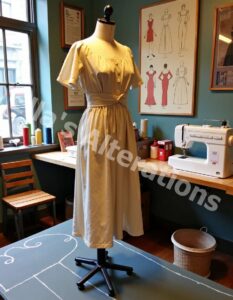
Money-Saving Style: Transform Your Wardrobe through Clothes Alterations!
FAQs:
How do I find inspiration for refashioning old clothes?
Finding inspiration for refashioning old clothes is easier than ever, thanks to a variety of online and offline resources that showcase creative ways to transform garments.
Whether you’re looking for subtle alterations or bold upcycling projects, there are countless places to spark your creativity.
Here are some of the best ways to find inspiration for refashioning your wardrobe.
1. Explore Social Media and Online Platforms
Social media is a goldmine for upcycling ideas and DIY fashion projects.
Platforms like Pinterest, Instagram, TikTok, and YouTube are filled with creative refashioning tutorials, thrift flips, and sewing hacks.
Search for hashtags like #UpcycledFashion, #ThriftFlip, #SustainableStyle, and #DIYClothing to discover before-and-after transformations and step-by-step guides.
Many influencers and creators share sewing techniques, no-sew alterations, and styling ideas that can inspire your next project.
2. Browse Fashion Blogs and Websites
Many fashion and sewing bloggers specialize in upcycling clothing.
Websites like Refashion Nation, The Spruce Crafts, and Seamwork offer detailed tutorials on how to turn old clothes into trendy new pieces.
Fashion-forward websites often highlight sustainability trends, showcasing how designers and everyday people are repurposing clothes creatively.
3. Get Inspired by Thrift Stores and Vintage Fashion
Browsing thrift stores, vintage boutiques, and secondhand markets can spark ideas for refashioning clothes.
Pay attention to unique patterns, fabrics, and silhouettes that you can modify or modernize.
Sometimes, seeing an item in person makes it easier to envision its potential.
4. Look at High Fashion for Upcycling Ideas
Many top designers incorporate upcycling into their collections.
Brands like Stella McCartney, Marine Serre, and Balenciaga have repurposed fabrics and old garments into stunning high-fashion pieces.
Checking out fashion week shows or sustainable designer collections can inspire creative ways to revamp your wardrobe.
5. Reimagine What’s Already in Your Closet
Before looking elsewhere, take a fresh look at your own wardrobe.
Try on clothes you haven’t worn in a while and think about why they’re not in regular rotation.
Would a different fit, added embellishments, or a new cut make them more wearable? Sometimes, small changes—like cropping a sweater, tapering pants, or removing sleeves—can make a huge difference.
6. Experiment with Fabric Swaps and Clothing Swaps
Join fabric swap groups or participate in clothing swaps with friends.
Seeing how others view and style garments can give you new ideas for repurposing materials.
You might also find pieces that inspire you to mix and match fabrics for a unique design.
7. Follow Sustainable Fashion Brands and Designers
Ethical fashion brands often use creative upcycling techniques in their designs.
Following brands that prioritize sustainability can introduce you to fresh ideas for repurposing clothes.
Many brands share behind-the-scenes looks at how they transform materials, which can provide insight into different techniques.
8. Join Online Upcycling Communities
There are many online groups and forums dedicated to DIY clothing refashioning.
Platforms like Reddit (r/VisibleMending, r/sewing), Facebook groups, and Discord communities connect people who share upcycling tips, project ideas, and success stories.
Engaging with these groups can help you troubleshoot challenges and find motivation.
9. Take Inspiration from Street Style and Pop Culture
Trendy street style and vintage fashion trends often provide great inspiration for clothing transformations.
Look at what’s currently popular in fashion and see how you can recreate similar styles using pieces from your own wardrobe.
TV shows, music videos, and red carpet events can also showcase unique ways to style and modify garments.
10. Keep a Creative Mood Board
Compile ideas, images, and sketches in a physical or digital mood board.
Use Pinterest, a fashion sketchbook, or a collage of magazine cutouts to keep track of your favorite refashioning ideas.
A mood board helps you visualize potential projects and stay inspired.
Final Thoughts
Refashioning old clothes is an exciting and creative process, and inspiration is everywhere.
Whether you’re exploring social media, browsing thrift stores, or taking cues from fashion designers, there are endless ways to reimagine your wardrobe.
With a little creativity and resourcefulness, you can turn outdated garments into stylish, one-of-a-kind pieces that reflect your personal style.
What are the best fabrics for repurposing old clothes?
Repurposing old clothes is a great way to embrace sustainable fashion, but not all fabrics are equally suited for upcycling.
The best fabrics for repurposing are durable, easy to work with, and versatile enough to be transformed into new garments, accessories, or home décor.
Here are some of the top fabric choices for repurposing and how you can make the most of them.
1. Cotton
Cotton is one of the easiest fabrics to repurpose because it is soft, breathable, and easy to sew.
Old cotton shirts, dresses, or bed linens can be turned into:
- T-shirts refashioned into tote bags or headbands
- Patchwork quilts, pillowcases, or reusable napkins
- Upcycled tops or skirts with added embellishments
2. Denim
Denim is incredibly durable and ideal for repurposing into stylish or functional pieces.
Old jeans and jackets can be transformed into:
- Denim shorts or skirts by cutting and hemming old jeans
- Tote bags, backpacks, or aprons for a rugged look
- Patchwork jackets or even decorative pillow covers
3. Wool
Wool is warm, long-lasting, and perfect for making cozy, upcycled items.
Old wool sweaters and coats can be:
- Cut into mittens, scarves, or beanies
- Felted and turned into coasters, cushion covers, or soft toys
- Used to make stylish vests or cardigans by altering their shape
4. Linen
Linen is lightweight, breathable, and ideal for warm-weather repurposing.
Linen dresses, pants, and blouses can be:
- Tailored into new, fitted garments
- Used for home décor items like curtains or table runners
- Sewn into breezy summer tops or skirts
5. Jersey (T-Shirt Fabric)
Jersey knit is soft and stretchy, making it great for comfortable repurposed clothing.
Old T-shirts can be:
- Made into loungewear, tank tops, or workout headbands
- Turned into fabric yarn for knitting or crocheting projects
- Used as cleaning rags or pillow stuffing if they’re too worn
6. Silk and Satin
Silk and satin are delicate fabrics, but they can be repurposed into elegant accessories or new garments.
Silk scarves, blouses, and dresses can be:
- Transformed into camisoles, sleep masks, or hair accessories
- Used to make luxurious pillowcases or lingerie
- Upcycled into chic, flowing skirts or dresses
7. Fleece and Flannel
These cozy fabrics are great for warm and soft repurposing projects.
Old fleece and flannel shirts or blankets can be:
- Sewn into pajama pants, robes, or scarves
- Used as lining for jackets or pet beds
- Made into baby blankets or plush toys
Choosing the Right Fabric for Your Project
The best fabric for your repurposing project depends on what you want to create.
Cotton and linen are great for breathable, everyday clothing, while denim and wool work well for structured or durable items.
Stretchy fabrics like jersey are best for casual wear, and luxurious materials like silk can be transformed into high-end accessories.
By selecting the right fabrics and experimenting with different upcycling techniques, you can breathe new life into old garments and contribute to a more sustainable, creative approach to fashion.
Where can I donate clothes that I can’t upcycle?
If you have clothes that you can’t upcycle or no longer need, donating them is a great way to ensure they are reused instead of ending up in landfills.
Many organizations accept clothing donations to support those in need, fund charitable programs, or provide affordable secondhand options.
Choosing the right place to donate depends on the condition of your clothes and the causes you want to support.
1. Local Thrift Stores and Charity Shops
Many thrift stores and nonprofit shops accept gently used clothing donations and resell them to fund community programs.
Some well-known options include:
Goodwill – Accepts clothing and accessories to sell in their thrift stores, with proceeds supporting job training programs.
The Salvation Army – Sells donated clothes to fund disaster relief, rehabilitation centers, and social services.
Habitat for Humanity ReStores – Some locations accept clothing donations to support their housing projects.
2. Homeless Shelters and Community Centers
Shelters and community outreach programs often accept clothing donations to provide for those in need.
Consider donating:
Coats, sweaters, and warm clothing for cold-weather shelters.
Professional attire to organizations that help individuals transition into the workforce.
Children’s clothing to family shelters or foster care programs.
3. Women’s and Family Shelters
Many women’s shelters provide clothing to survivors of domestic violence, single mothers, and families in crisis.
Some organizations include:
Dress for Success – Accepts professional clothing to help women entering the workforce.
Local crisis centers – Often need casual wear, baby clothes, and maternity wear.
4. Clothing Drives and Religious Organizations
Churches, mosques, synagogues, and community groups frequently host clothing drives to support local families, refugees, and those experiencing hardship.
Check with local religious organizations to see if they are accepting donations.
5. Schools and Youth Programs
Many schools and community centers accept donations for students in need, especially:
Winter coats, gloves, and hats for school-aged children.
Uniforms or school-appropriate clothing for families struggling financially.
Sportswear and sneakers for after-school programs.
6. Clothing Recycling Programs
If your clothes are too damaged for donation, recycling is a great alternative.
Many brands and retailers offer clothing recycling programs, including:
H&M Garment Collecting Program – Accepts any brand of old clothes and textiles, regardless of condition.
Patagonia Worn Wear – Repairs and resells Patagonia-brand clothing.
Levi’s and Madewell Denim Recycling – Collects old denim to be repurposed into insulation for housing projects.
7. Online Donation Platforms
If you prefer to donate directly to individuals or specific causes, consider online platforms like:
Freecycle – Allows you to give away clothing to people in your local area.
Facebook Marketplace and Buy Nothing Groups – Community-driven exchanges where you can offer clothes for free.
Final Thoughts
Before donating, check the condition of your clothes—only give away items that are clean and in wearable condition.
For heavily worn or damaged clothes, consider textile recycling programs instead.
By donating to the right place, you can ensure your unwanted clothes find a new home and help someone in need while keeping textiles out of landfills.
Is upcycled fashion trendy?
Yes, upcycled fashion is not only trendy but is also shaping the future of sustainable style.
As more consumers seek eco-friendly alternatives to fast fashion, upcycled clothing has gained significant popularity among designers, influencers, and everyday fashion lovers.
The rise of conscious consumerism, the appeal of one-of-a-kind pieces, and the influence of celebrities and fashion brands have all contributed to making upcycled fashion a mainstream trend.
1. The Growing Appeal of Sustainable Fashion
With increasing awareness of the environmental impact of fast fashion, more people are embracing sustainable alternatives like upcycling.
Consumers are looking for ways to reduce waste and make ethical fashion choices, and repurposing old clothes into stylish, modern pieces perfectly aligns with this shift.
2. Upcycling in High Fashion
Luxury and independent designers have embraced upcycling as a creative way to produce unique garments while reducing waste.
Major fashion houses like Balenciaga, Stella McCartney, and Marine Serre have incorporated upcycled fabrics into their collections, proving that repurposed clothing can be high-end and fashionable.
Additionally, smaller brands and independent designers are using thrifted materials to craft new, stylish designs that cater to the demand for sustainable and unique fashion.
3. Influencer and Celebrity Influence
Social media influencers and celebrities have played a huge role in popularizing upcycled fashion.
Stars like Zendaya, Billie Eilish, and Emma Watson have been seen wearing upcycled and vintage clothing on red carpets, promoting the idea that repurposed garments can be glamorous and chic.
Influencers on platforms like Instagram, TikTok, and YouTube regularly showcase DIY upcycling projects, inspiring millions to try it themselves.
4. The Popularity of Thrift Flipping and DIY Fashion
“Thrift flipping,” the process of taking secondhand clothing and transforming it into something trendy, has become a huge trend, especially among Gen Z.
Social media platforms are filled with tutorials on repurposing old jeans into stylish shorts, converting oversized blazers into fitted pieces, and adding custom embroidery to give clothes a fresh new look.
This DIY movement has helped make upcycled fashion more accessible and appealing to a broader audience.
5. Upcycled Fashion as a Statement of Individuality
One of the biggest reasons upcycled fashion is so trendy is its uniqueness.
Unlike mass-produced fast fashion items, upcycled pieces are one-of-a-kind.
Whether it’s a patchwork denim jacket, a dress made from vintage fabrics, or a hand-embroidered thrifted shirt, wearing upcycled fashion allows people to express their individuality through clothing that no one else owns.
6. The Future of Upcycled Fashion
As sustainability continues to be a priority in the fashion industry, upcycling is expected to become even more popular.
More brands are investing in circular fashion models, where clothing is designed to be reused and repurposed instead of discarded.
With innovative techniques and increasing consumer interest, upcycled fashion is no longer just a passing trend—it’s a long-term movement toward a more sustainable and stylish future.
Final Thoughts
Upcycled fashion is not just trendy; it’s a movement that blends sustainability, creativity, and individuality.
Whether through designer collections, DIY projects, or thrift flips, repurposed clothing has cemented itself as a stylish and responsible alternative to fast fashion.
With growing awareness and innovation, upcycled fashion is here to stay, making it one of the most exciting and future-forward trends in the industry.
How do I find inspiration for refashioning old clothes?
Finding inspiration for refashioning old clothes is easier than ever, thanks to a variety of online and offline resources that showcase creative ways to transform garments.
Whether you’re looking for subtle alterations or bold upcycling projects, there are countless places to spark your creativity.
Here are some of the best ways to find inspiration for refashioning your wardrobe.
1. Explore Social Media and Online Platforms
Social media is a goldmine for upcycling ideas and DIY fashion projects.
Platforms like Pinterest, Instagram, TikTok, and YouTube are filled with creative refashioning tutorials, thrift flips, and sewing hacks.
Search for hashtags like #UpcycledFashion, #ThriftFlip, #SustainableStyle, and #DIYClothing to discover before-and-after transformations and step-by-step guides.
Many influencers and creators share sewing techniques, no-sew alterations, and styling ideas that can inspire your next project.
2. Browse Fashion Blogs and Websites
Many fashion and sewing bloggers specialize in upcycling clothing.
Websites like Refashion Nation, The Spruce Crafts, and Seamwork offer detailed tutorials on how to turn old clothes into trendy new pieces.
Fashion-forward websites often highlight sustainability trends, showcasing how designers and everyday people are repurposing clothes creatively.
3. Get Inspired by Thrift Stores and Vintage Fashion
Browsing thrift stores, vintage boutiques, and secondhand markets can spark ideas for refashioning clothes.
Pay attention to unique patterns, fabrics, and silhouettes that you can modify or modernize.
Sometimes, seeing an item in person makes it easier to envision its potential.
4. Look at High Fashion for Upcycling Ideas
Many top designers incorporate upcycling into their collections.
Brands like Stella McCartney, Marine Serre, and Balenciaga have repurposed fabrics and old garments into stunning high-fashion pieces.
Checking out fashion week shows or sustainable designer collections can inspire creative ways to revamp your wardrobe.
5. Reimagine What’s Already in Your Closet
Before looking elsewhere, take a fresh look at your own wardrobe.
Try on clothes you haven’t worn in a while and think about why they’re not in regular rotation.
Would a different fit, added embellishments, or a new cut make them more wearable? Sometimes, small changes—like cropping a sweater, tapering pants, or removing sleeves—can make a huge difference.
6. Experiment with Fabric Swaps and Clothing Swaps
Join fabric swap groups or participate in clothing swaps with friends.
Seeing how others view and style garments can give you new ideas for repurposing materials.
You might also find pieces that inspire you to mix and match fabrics for a unique design.
7. Follow Sustainable Fashion Brands and Designers
Ethical fashion brands often use creative upcycling techniques in their designs.
Following brands that prioritize sustainability can introduce you to fresh ideas for repurposing clothes.
Many brands share behind-the-scenes looks at how they transform materials, which can provide insight into different techniques.
8. Join Online Upcycling Communities
There are many online groups and forums dedicated to DIY clothing refashioning.
Platforms like Reddit (r/VisibleMending, r/sewing), Facebook groups, and Discord communities connect people who share upcycling tips, project ideas, and success stories.
Engaging with these groups can help you troubleshoot challenges and find motivation.
9. Take Inspiration from Street Style and Pop Culture
Trendy street style and vintage fashion trends often provide great inspiration for clothing transformations.
Look at what’s currently popular in fashion and see how you can recreate similar styles using pieces from your own wardrobe.
TV shows, music videos, and red carpet events can also showcase unique ways to style and modify garments.
10. Keep a Creative Mood Board
Compile ideas, images, and sketches in a physical or digital mood board.
Use Pinterest, a fashion sketchbook, or a collage of magazine cutouts to keep track of your favorite refashioning ideas.
A mood board helps you visualize potential projects and stay inspired.
Final Thoughts
Refashioning old clothes is an exciting and creative process, and inspiration is everywhere.
Whether you’re exploring social media, browsing thrift stores, or taking cues from fashion designers, there are endless ways to reimagine your wardrobe.
With a little creativity and resourcefulness, you can turn outdated garments into stylish, one-of-a-kind pieces that reflect your personal style.
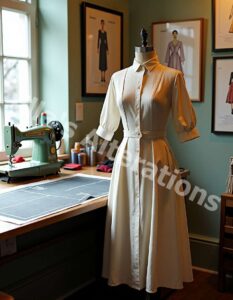
Don’t Let it Gather Dust: Repurposing Your Vintage Wedding Dress.
About Us
|
Locations: 28.23362,
-82.181195, 25 Miles |
Instead of discarding old or outdated clothes, why not give them a second chance? From Old to Bold delves into the art of tailoring, mending, and refashioning garments to fit today’s fashion trends. Learn how to adjust hems, modify necklines, and repurpose fabrics to create new styles from existing pieces. Whether you want to transform an oversized shirt into a trendy crop top or restore a vintage dress with a modern twist, this guide offers practical tips and creative inspiration. By making simple clothing alterations or embracing upcycling projects, you can refresh your wardrobe without buying new items. This sustainable approach to fashion helps reduce environmental impact while allowing you to customize your style and make a bold fashion statement.
